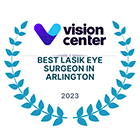
“How much screen time should I allow my kids?” is a question that has been asked since the introduction of family TVs and, later, computers. There’s many ways to approach this question, but seeing as we are a group of optometrists and ophthalmologists, we like to look at it by how screen time affects children’s eye sight.
Too Much Screen Time for Kids Can Cause...
Nearsightedness
Natural daylight is important for young eyes to develop. Children who spend more time indoors are at a high risk of developing nearsightedness or myopia. Using screened devices is usually an indoor activity, meaning there is a strong correlation to children’s increased use of screens to the increase in children with myopia.
Issues with Focusing Sight
Additionally, constant screen use could affect children’s ability to adjust their focus. This comes from gazing at a fixed point for an extended period of time. It’s quite easy for kids to become absorbed in their digital activity, so much that they don’t notice until they put down their device. While this usually corrects itself after a few hours if not shortly after screen use, it is possible for the focus to “lock” due to something known as an accommodation spasm.
Irritated or Dry eyes
Another problem associated with staring at a fixed point close to us, is that we tend to blink less. People of all ages may notice their eyes feeling dry or otherwise irritated after prolonged screen use because of this.
Eye Strain
Like any muscle in the body, the muscles around the eyes can become strained from overuse. Young eyes may not notice the strain, but simply spending over 2 hours per day is enough to experience headaches and eye strain, as well as reduced attention span, irritability, and poor behavior.
Disrupted Sleep
Lastly, while not directly related to vision, excessive screen time is also known to disrupt sleep. With sleep being imperative to growing bodies, reduced sleep due to TVs, computers, and smartphones is a serious affliction.
How to Protect Kids Eye Health From Screens
Exposure to screened devices is not inherently bad. A lot of the above issues come from excessive or suboptimal use of screens. To protect your child’s vision, follow the below guidelines:
Set a Time Limit
Setting a time limit for how long your child can use a given device, or a total for the day, can seriously help curb the negative effects. Additionally, we suggest limiting screen exposure at least one hour prior to bed to avoid the negative effects on sleep specifically.
Additionally, using the popular 20-20-20 rule when using their devices can help reduce eye strain. For every 20 minutes of screen time, have your child take a 20 second break where they focus on an object 20 feet away from them. This relaxes the eye muscles and gives them a break from fixed focusing.
Adjust The Location (Height, other light sources, distance, etc.)
The position and locations where children use their screens can also impact their use. Make sure the screen is positioned slightly below their eye line and at least 20 inches away from their faces. Additionally, you can create “screen free zones” such as your child’s bedroom, at the dinner table, or in the car, as a few examples. Lastly, make sure stationary screens like TVs and desktops are angled in a way to reduce glare from windows and/or indoor lighting.
Get Specialty Glasses
If your child relies on screen devices for things like school and you find it difficult to reduce their screen time, then blue light glasses or similar assistance may be useful. While we can’t say blue light reduces glasses are medically significant, there are many anecdotes singing their praises. Additionally, if your child already wears glasses, you can have an anti-reflective coating added, as well. Computer monitor hoods or shades that attach to the screen may also be an option to consider.
Model Good Behavior
All of the above suggestions become much easier to implement with your children when you follow them yourself. Showing how to live a healthy, balanced life where all habits are practiced in moderation is one of the best strategies against the negative effects of screened devices.
Get Eye Exams
Another habit we highly recommend is visiting your eye care doctor each year. Having eye exams while your children’s eyes are still developing can help you identify significant changes in their vision, meaning their eye health is closely monitored and cared for.
So, there’s not exactly a hard number we’ll prescribe to any and all families when it comes to screen time for their children. What’s most important is developing good habits around screen use, and having the whole family stick to them. We hope this article provides you with some helpful guidelines, but if you’d like more help, please consider reaching out to our specialists.











.png)
